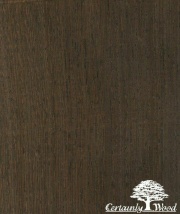Difference between revisions of "Wenge"
Jump to navigation
Jump to search
(username removed) |
|||
| (2 intermediate revisions by 2 users not shown) | |||
| Line 6: | Line 6: | ||
== Synonyms and Related Terms == | == Synonyms and Related Terms == | ||
| − | ''Millettia laurentii''; | + | ''Millettia laurentii''; wengué (Fr.) |
| − | == | + | == Risks == |
| − | Skin contact and inhalation of dust causes irritation. Splinter wounds take a long time to heal. | + | * Skin contact and inhalation of dust causes irritation. |
| + | * Splinter wounds take a long time to heal. | ||
| − | == | + | ==Resources and Citations== |
| − | * | + | * Michael McCann, ''Artist Beware'', Watson-Guptill Publications, New York City, 1979 |
| − | * ''Encyclopedia Britannica'', http://www.britannica.com Comment: "Congo." | + | * ''Encyclopedia Britannica'', http://www.britannica.com Comment: "Congo." Accessed 27 Oct. 2004 . |
[[Category:Materials database]] | [[Category:Materials database]] | ||
Latest revision as of 14:38, 26 June 2022
Description
A dense, dark-colored wood obtained from the Millettia laurentii trees native to tropical regions of Africa.
Synonyms and Related Terms
Millettia laurentii; wengué (Fr.)
Risks
- Skin contact and inhalation of dust causes irritation.
- Splinter wounds take a long time to heal.
Resources and Citations
- Michael McCann, Artist Beware, Watson-Guptill Publications, New York City, 1979
- Encyclopedia Britannica, http://www.britannica.com Comment: "Congo." Accessed 27 Oct. 2004 .
